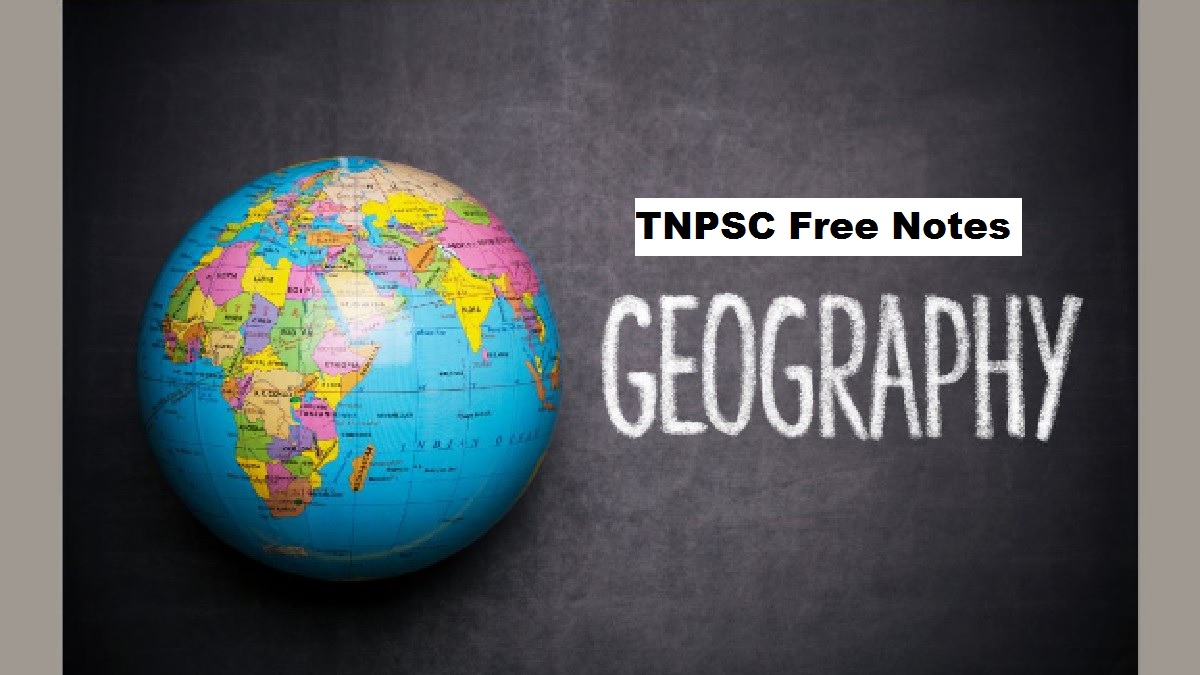இந்தக் கட்டுரையில், TNPSC குரூப் 1, குரூப் 2, குரூப் 2A, குரூப் 4 மாநிலப் போட்டித் தேர்வுகளான TNUSRB, TRB, TET, TNEB போன்றவற்றுக்கான முறைகள் இலவசக் குறிப்புகளைப் பெறுவீர்கள்.தேர்வுக்கு தயாராவோர் இங்குள்ள பாடக்குறிப்புகளை படித்து பயன்பெற வாழ்த்துகிறோம்.
Population – 1
Malthusian Theory of Population
Proposed by Thomas Malthus
Relation between Population Growth & Food Supply
The Theory of Optimum Population
Proposed by Sidgwick, Cannan, Dalton & Robbins
The Theory of Demographic Transition
Proposed by Frank W. Notestein
First Census is conducted in 1872
First Complete and Synchronous Census conducted in 1881
World Population day – 11th July – From 1987
National Population Day – February 9th
700th crore baby of the World is Nargis
15th Census is conducted in 2011. It is seventh census after Independence
Theme: Our Census; Our Future
2011 Census – 1,21,01,93,422 (17.5% of the World)
Total population of Uttar Pradesh, Maharashtra is greater than the population of United
States
Population Growth
The Period of Stagnant Population (1901-1921)
Year of Great Demographic Divide – 1921 (Growth Rate is -0.31%)
The Period of Steady Growth (1921- 1951)
The Period of Steady Growth (1951- 1981)
Year of Population Explosion – 1961
The Period of High Growth with Definite Signs of Slowing Down (1981- 2011)
Population of India increased from 685 million to 1210 million during this phase.
Population growth percentage
Population Distribution
Highest states are Uttar Pradesh – 199.5 million, Maharashtra – 112.3 million
Lowest state is Sikkim – 0.61 million
Delhi – 16.75 million, tops among the Union territories.
Density of population
Average Density – 382 Persons per sq.km
Densely Populated State – Bihar (1,102 persons per sq.km)
Least Population Density – Arunachal Pradesh (17 persons per sq.km)
New Delhi (11,297 persons per sq.km)
Andaman and Nicobar Islands Delhi (46 persons per sq.km)
Population composition
Population composition refers to the characteristics such as age, sex, marital status, caste,
religion, language, education, occupation etc.
(All the details below are from 2011 census)
Age composition:
29.5% are under 15 years of age (Children)
8% of people are over 60
62.5% – Working population
37.5% – Dependent ratio
Sex Ratio:
Sex ratio is defined as the number of females per 1000 male population
Sex ratio of India -940 Females Per 1000 Males.
This suggests that the size of female population is lower than males.
a. 1084 – Kerala (Highest sex ratio)
b. 1037 – Puducherry
c. Daman and Diu – 618 (Lowest sex ratio)
Literacy Rate:
The people who are able to read and write are known as literates.
The percentage of literate people to the total population is termed as literacy rate.
There has been a steady improvement in the literacy levels in India
India’s literacy rate – 74.04%
Male – 82.14%
Female – 65.46%
It shows that still there is a vast gap (16.68%) between the male and female literacy
rates.
1. Kerala – 93.91% (Highest)
2. Lakshadweep – 92.28% (Second)
3. Bihar – 63.82 % (Lowest)
Urbanization:
The process of society’s transformation from rural to urban is known as urbanization.
The level of urbanization is measured in terms of percentage of urban population.
Urban Population – 27.82% in 2001 and 31.16% in 2011
Most Urbanized State – Goa – 62.17%
Least Urbanized State – Himachal Pradesh – 10.04%
Most Urbanized Union territory – Delhi
Second most urbanized – Chandigarh.
Among the major states, Tamil Nadu continues to be the second most urbanized state
with 48.4% percent of urban population followed by Kerala and Maharashtra.
Urban Agglomerations – Million Cities
3 Mega Cities
In 2007, for the first time in history, the global urban population exceeded the global
rural population and the world population has remained predominantly urban
thereafter. (World Urbanisation Prospects, 2014 Revision, Highlights).
India, China and Nigeria – together are expected to account for 35 % of the growth in
the world’s urban population between 2018 and 2050.
India is projected to add 416 million urban dwellers, China 255 million and Nigeria 189
million (World Urbanisation Prospects, 2018, Key facts
Human Development
The term Human development index was developed by Mahbub ul Haq
Factors which determine the Human Development Index are
1. Health
2. Education
3. Income
4. Migration
Factors of Migration:
Ecological or Natural Causes of Migration
Economic causes of Migration
Socio-cultural causes of Migration
Demographic causes of Migration
Political causes of Migration
Types of Migration
a. Based on the movement associated with administrative limits
I. Internal migration
1. Rural to Urban Migration
2. Urban to Urban Migration
3. Rural to Rural Migration
4. Urban to Rural Migration
II. International Migration
b. Based on the willingness of the migrants for migration
I. Voluntary Migration
II. Involuntary or forced Migration
c. Based on the duration of stay of migrants in the place of destination
I. Short term migration
II. Long term migration
III. Seasonal migration
Transhumance
Consequences of Migration
a. Demographic consequences
b. Social consequences
c. Economic consequences
I. Brain drain
Brain drain refers to the migration in which skilled people from economically
backward countries move to developed countries in search of better opportunities.
II. Backwash effect
Eventually, this leads to backwardness in source regions. This is called as “backwash
effect”.
d. Environmental consequences
In 2017, India was the largest country of origin of international migrants (17 million),
followed by Mexico (13 million). (International Migration Report, 2017).
**************************************************************************
| Adda247 TamilNadu Home page | Click here |
| Official Website=Adda247 | Click here |




